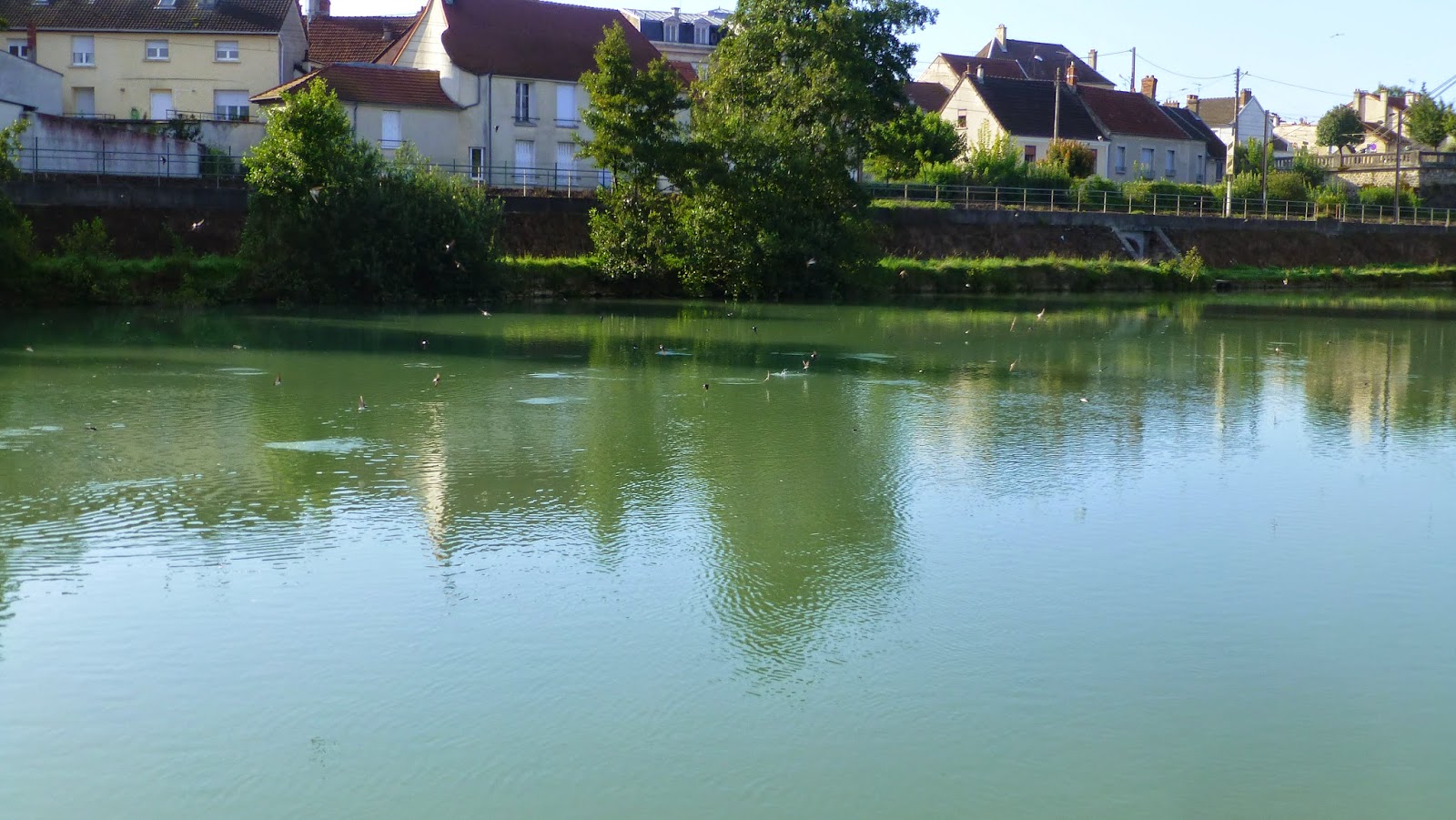We have been on the French canals for 4 weeks and have made it to Champagne. Along the way we have experienced some very big locks and some very big barges, particularly on the Canal de Dunkerque and Escaut. In fact being in some of those locks was a bit like being in a big watery coffin.
I think we have finally developed a technique for entering a lock and tying up but that may all change once we go to a different canal. It seems each canal has a different lock system (some are automatic with telecontrollers, some controlled by lock keepers and some that require you to turn a wand attached to a pole on the bank some 200m prior to the lock) and the bollards aren't really positioned for smaller boats like ours so each lock can be a bit of an adventure. We just went into our first lock on the River Marne and our knowledge of locks has been increased again. This lock has sloping sides and a floating pontoon.
As we entered the lock we were approached by the l'eclusier (lock keeper) who, after getting a few details, handed us the mother of all lock controls. This telecontroller even comes with it's own box (like a briefcase) to protect it, as well as having its own battery charger.

Then there are the tunnels. The first tunnel we came across on the Canal St Quentin was unusual in that you weren't allowed to enter under your own power. Due to the fact that there was no ventilation and the tunnel was over 5km long we had to be towed through by a chain tug. We have heard that sometimes there can be as many as 20 boats tied in a queue with the biggest and heaviest at the front and the smallest being swayed to and fro on the back. Fortunately for us, on the day we went through, we were the largest of three so had the privilege of being directly behind the tug. Other tunnels that we have been through are shorter and have ventilation so we are able to go in under our own power. However, they have been controlled by VNF which only allow one boat through at a time.


The prettier canals are those less commercial ones such as the Canal St Quentin that runs through Cambrai. There are more villages on the sides and more places to stop. If you are happy to stop anywhere then the mooring is free and sometimes even those with water and power are free, just to entice you into the village to boost the local economy. We have come across some great little local boulangeries and boucheries along the way. Currently we are moored at Damery. We were surprised when we got off the pontoon to find hidden in the shrubbery an electric hitch up point free of charge as this wasn't listed in our book.
We have also met a great array of people, mostly English, Australian and New Zealanders. In Sillery, between Reims and Epernay, there was quite a little community of expats and most nights we have drinks, or a BBQ and there was even a friendly game of boules. You almost have to leave to save your liver!!




















































